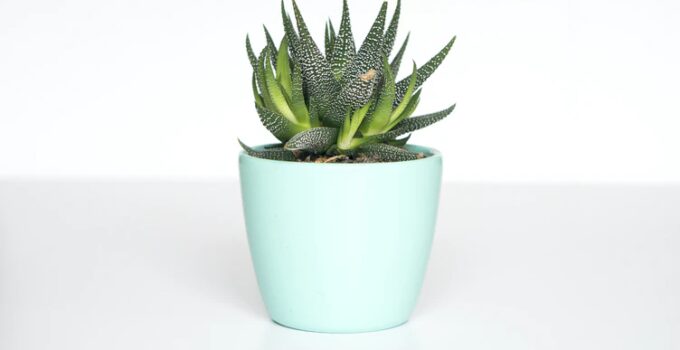In this time of the pandemic, people take a lot of vitamins to make themselves healthy. Individuals have also started taking care of plants to make sure that they are being productive while stuck at home.
Why not join this trend? Studies have shown that individuals who live near trees or plants live longer than people who lived near less. Indeed, taking care of plants has proven beneficial for humans, animals, and the earth in its entirety. Enjoy the benefits of living longer with the five indoor plants mentioned below:
1. Nasturtiums
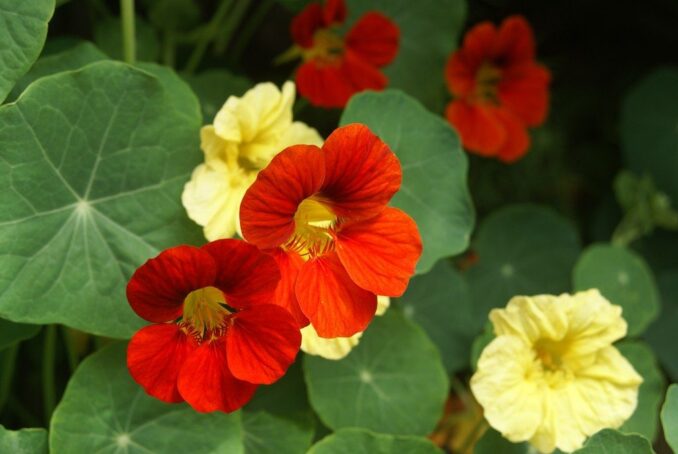
Source:gardeningknowhow.com
Nasturtiums (Tropaeolum) have seeds that are huge that even small children can sow. It has green leaves that shine brightly and spots of vibrant colored blossoms poking out of the middle of the foliage. The leaves of nasturtium are rounded; imagine a water lily to visualize their leaves. Its flowers have a shape of an open funnel with a little claw on the underside.
According to GardenersPath.com, the leaves, seeds, and flowers of this plant are edible. The flowers of nasturtiums are rich in Vitamin C and iron. Additionally, the flowers are safe to eat, and it is delicious at that. The flower is used as medicine and other herbs, often used for urinary tract infections, coughs, etc.
2. Fishtail Palm
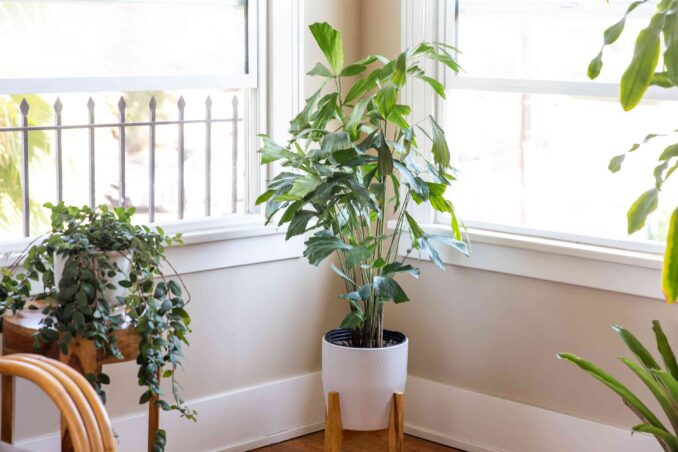
Source:thespruce.com
Imagine a fishtail or a fin, then imagine how it would look like if it were a plant. From the word itself, fishtail palm (Caryota) looks like a fishtail because of its ruffled appearance. Its leaves are a jagged edge with a triangular form. The Fishtail Palm is considered to be the largest among its varieties.
The Fishtail Palm is on the list of the most elegant-looking palms adding an upscale feel to any room because of its majestic beauty as a large plant. It can grow up to 20 to 25 feet and 15 feet wide at a slow to moderate speed. The leaves of this plant can be used to make a good rope.
3. Flamingo Lily
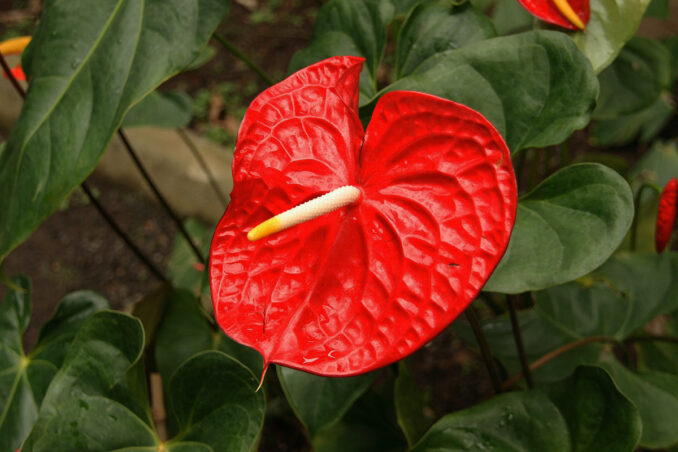
Source:mpowerfulplants.com
Anthurium Andraeanum is the scientific name of Flamingo lily. It is one of the most beautiful flowers to plant inside your home. Flamingo lily plant flowers are heart-shaped, waxy, and glossy, making it look like a fake flower since it looks like plastic. Thus, there are many flamingo lilies made of plastic to make it seem that it’s real. In the middle of the flower is a spadix that’s shaped like a spike.
This plant has many varieties with different colors like purple, pink, and of course, red. It can grow up to 12-18 inches. Remember to keep your pets away from this plant as it can be poisonous.
4. Bird’s Nest Fern
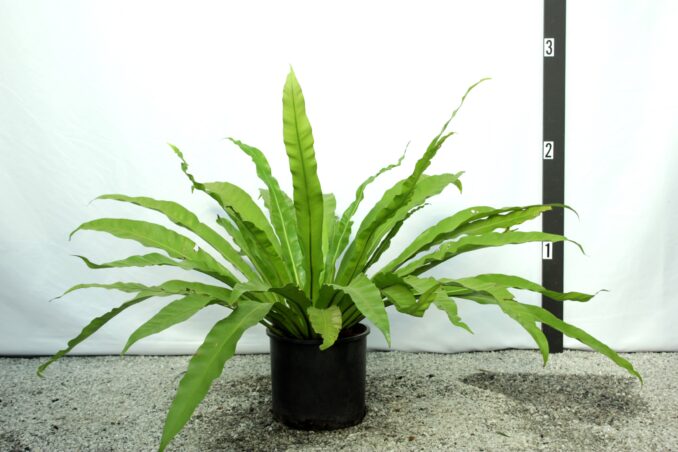
Source:cinemagreens.com
Bird’s Nest Fern (Asplenium Nidus) has a unique set of foliage. It is green, with undivided solid fronds with a consistent length and width, depending on the species. Each leaf has a dark central rib, and all of these leaves meet in the middle.
The plant’s leaves can accumulate large quantities of water whenever it rains – this is how this plant obtains its food. With this, the bird’s nest fern is self-sufficient, but if there’s minimal rain, water it every one to two weeks.
In cases where you have dogs and cats at home, you can get this plant as it is not poisonous to pets and humans. Many plants of the same family are not toxic; therefore, you can get your set of plants from the fern family.
5. Dwarf Date Palm
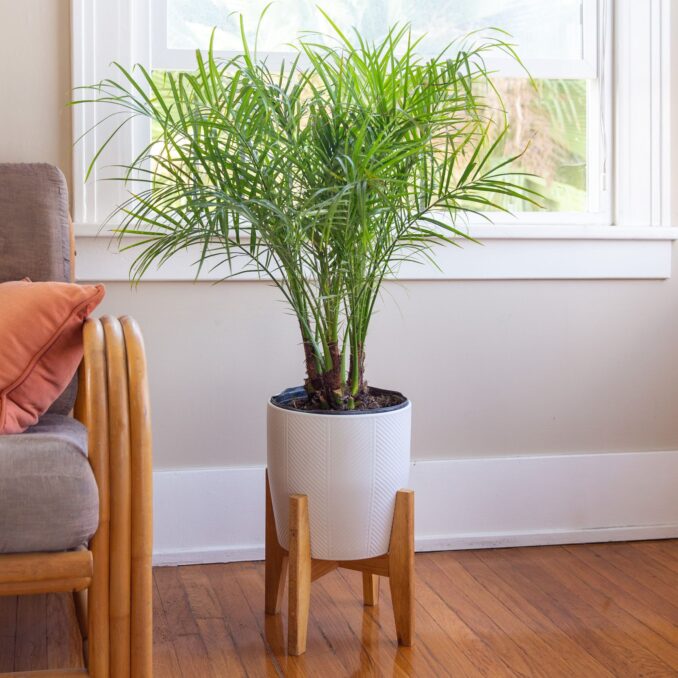
Source:thespruce.com
Dwarf Date Palm or Phoenix roebelenii, is also commonly called the pygmy date palm. It has a soft, almost feathery appearance. The leaves of this plant are three to five feet long and gently arches at a slight angle. You might have seen this plant outdoors, but don’t worry, you can grow this plant indoors as well.
The Pygmy Date Palm is easy to take care of. In fact, this plant requires little maintenance, that most people love placing them inside their rooms and houses. You can place it in a window that faces east or south.
For its soil, keep it moist and don’t overwater it to prevent it from being soggy. Although, in winter, make sure that the earth has dried out before watering again. An indication if the plant didn’t like your way of watering it is when its leaves turn brown from excessive watering.
Among the other family of palms, only the dwarf date palm is suitable to place indoors. The plant doesn’t have any toxic parts. This fact makes it perfect indoors especially if you have little children and pets living with you.
6. Aloe Vera
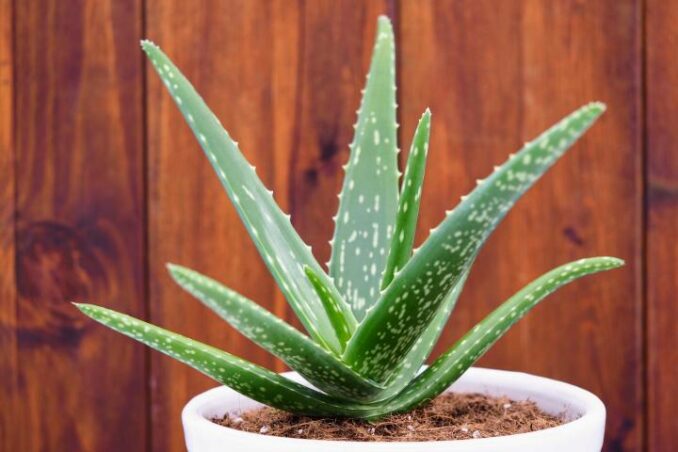
Source:almanac.com
Aloe Vera is one of the most common plants you can grow indoors. The plant isn’t difficult to maintain and is fairly easy to plant. Aside from that, aloe vera has a lot of benefits to give. For one, aloe vera is known to help with hair growth. The gooey gel inside its leaves is full of nutrients that are necessary for a healthier scalp and hair.
Additionally, the same goo also helps treat small cuts and burns. Aesthetically, the aloe vera isn’t a pushover too. If you want a minimalist look inside your room, you can put a small aloe vera plant in a small pot. The plant’s broad and thick leaves will look well, especially if placed behind white or black minimalist wallpapers.
If you’re worried about keeping aloe vera indoors because of pets and children, then don’t be. Aloe Vera isn’t toxic at all. In fact, most people who live in the tropics actually eat the goo inside the leaves. It’s a rich source of water and other nutrients that prevent dehydration.
Takeaway
Now that the pandemic is in full swing, a lot of people are at home working. Some don’t even have work but are forced to stay home because of quarantine. Staying at home without doing anything can be very stressful. Thankfully, a lot of hobbies are emerging that help people cope with being indoors too long.
Planting and taking care of indoor plants is one activity that’s trending. The plants mentioned above are perfect if you want to place some greens inside your home. Remember, take care of these plants and they’ll make your place look incredible.


